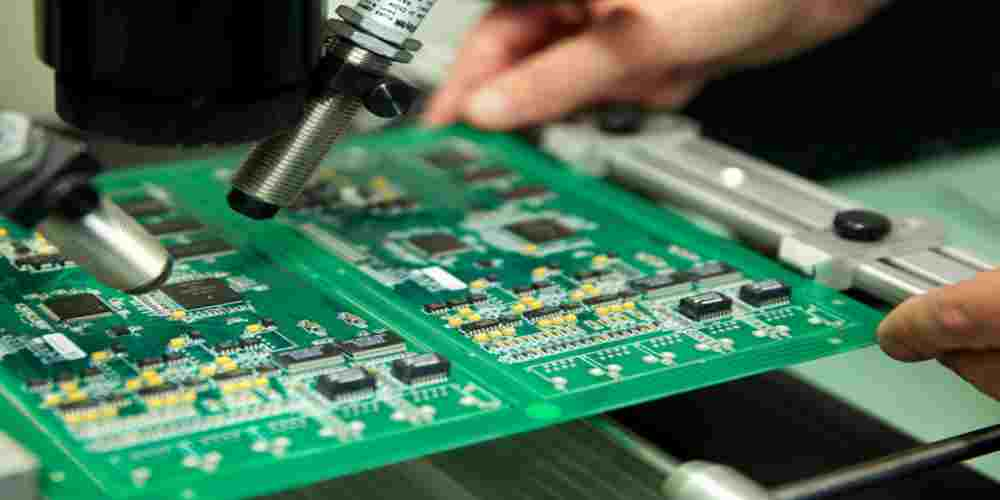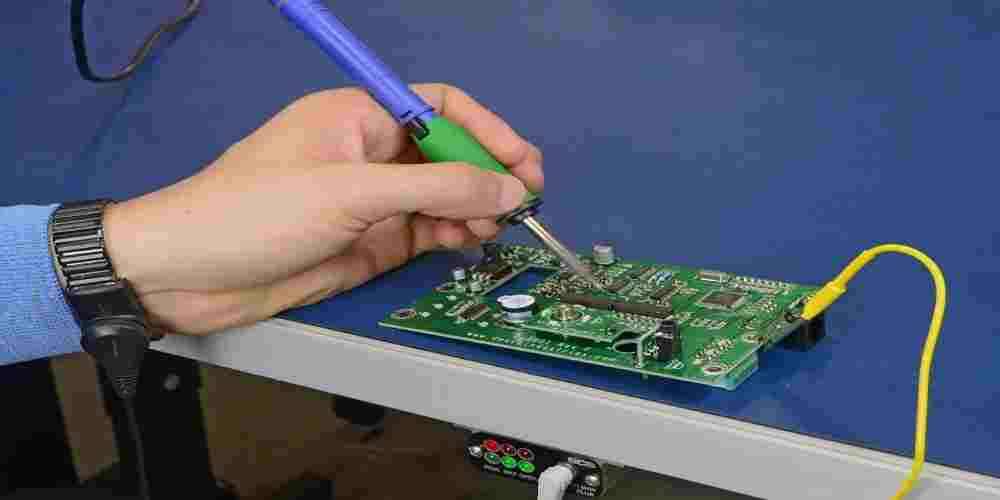Electrostatic discharge (ESD) is a common yet potentially harmful phenomenon that frequently occurs during the surface-mount technology (SMT) assembly process. ESD can cause significant damage to delicate electronic components, leading to decreased lifespan and potentially malfunctioning devices. Therefore, it is essential for individuals and businesses involved in electronics manufacturing to take necessary precautions to mitigate and prevent ESD damage in the SMT assembly process.
One of the leading causes of ESD damage is a lack of proper procedures and safeguards at the workplace. Implementing a well-designed ESD control program can effectively minimize the risks associated with electrostatic discharge during the SMT assembly process. This includes training employees on proper handling techniques, utilizing appropriate grounding methods, and selecting suitable materials for the work environment.
By incorporating specific ESD prevention measures throughout each stage of the SMT assembly process, it is possible to significantly reduce the risk of damage to sensitive electronic components. This not only helps to ensure the reliability and efficiency of the final product but also contributes to cost savings and a more sustainable production process. In the following sections, we will explore various methods and strategies to help prevent ESD damage in SMT assembly processes.

Understanding ESD and Its Effects on SMT Assembly
Basic Principles of ESD
Electrostatic Discharge (ESD) occurs when two objects with different electrical charges come into contact or close proximity, causing a rapid transfer of charge. This phenomenon commonly happens due to friction between materials, often generating a static charge on surfaces.
ESD threats are particularly relevant in the electronics manufacturing industry, especially Surface Mount Technology (SMT) assembly processes. Electronic components and PCBs are susceptible to ESD damage, which can lead to costly failures and lower product quality.
ESD Damage in SMT Process
In SMT assembly, the damage caused by ESD can be categorized into two types: catastrophic and latent failures.
- Catastrophic Failures: ESD can cause the immediate destruction of an electronic component, rendering it non-functional. These failures are easier to detect during testing, so the affected components can be replaced before reaching the end-user.
- Latent Failures: ESD may partially damage the component, causing it to degrade over time. These failures are difficult to detect during standard testing, posing a greater risk to the end-user. Latent failures may result in unexpected device malfunctions and reduced product lifespan.
To minimize ESD damage during the SMT assembly process, proper handling techniques, ESD-safe materials, and consistent environmental controls should be implemented. These measures will not only protect the components but also ensure the reliability and longevity of the final product.
Preventing ESD Damage in the SMT Assembly Process
Proper Handling of Components
When handling electronic components during the SMT assembly process, it is essential to follow proper procedures to prevent ESD damage. Here are some guidelines to follow:
- Always use ESD safe tools, such as tweezers and vacuum pens
- Use ESD safe packaging, like anti-static bags and trays, when storing or transporting components
- Ground yourself before handling any components to discharge static buildup
- Avoid touching the leads or other sensitive areas of the components
Establishing an ESD Safe Work Area
Creating an ESD safe work area during the SMT assembly process can significantly minimize the risk of ESD damage to components. Consider implementing these measures in your workspace:
- Install ESD-safe flooring or mats to minimize static build-up from walking or movement
- Use ESD-safe workbenches, shelves, and storage units for equipment and components
- Place ESD wrist straps and grounding cords at each work station for operators to wear
- Keep materials that generate static away from the work area, such as plastics or untreated paper
- Regularly clean and maintain ESD protection equipment to ensure proper performance
Remember that preventing ESD damage is crucial for maintaining the quality and reliability of the SMT assembly process. By following proper handling procedures and establishing an ESD safe work area, you can minimize the risk of damage to your electronic components.
ESD Protection Tools and Equipment

Anti-Static Wrist Straps and Mats
Anti-static wrist straps are essential tools for grounding workers to prevent the buildup of static charge. Wearing a properly connected wrist strap creates a continuous conductive path from the worker to the ground, ensuring that static charges are safely dissipated.
Similarly, anti-static mats are used as work surfaces to provide a grounded surface for placing sensitive components. These mats often have a conductive layer that is connected to a grounding point, allowing them to dissipate static charges. It is crucial that both wrist straps and mats are routinely tested for proper grounding connections.
Ionizers
Ionizers are devices that emit charged particles, known as ions, into the air to neutralize static charges on nearby surfaces. They are particularly useful in situations where it is not possible to ground workers directly or where ESD-sensitive devices are difficult to handle with grounding tools. Ionizers can be standalone units, mounted overhead, or integrated into workstations.
There are three main types of ionizers used in SMT assembly processes:
- DC ionizers: Produce a constant stream of ions.
- AC ionizers: Alternate polarity of the ions generated.
- Pulsed DC ionizers: Generate pulses of ions with alternating polarity.
Choosing the right ionizer for your process is essential, as each type has its advantages and drawbacks. Regular maintenance and cleaning of ionizers are required to ensure optimal performance.
ESD-Protected Storage
ESD-protected storage, such as conductive bags, bins, and containers, play an essential role in safeguarding components against ESD damage during transportation and storage. These containers have a conductive or dissipative surface that allows any accumulated static charges to dissipate safely.
When using ESD-protected storage, it is essential to follow proper procedures:
- Seal components in static shielding bags during transportation.
- Use ESD-protected storage bins or containers for components on the shop floor.
- Regularly inspect and replace damaged or worn-out ESD-protected storage options.
By utilizing these ESD protection tools and equipment, the risk of ESD damage in the SMT assembly process can be significantly reduced. Regular maintenance and monitoring of these tools are crucial in ensuring their effectiveness in protecting sensitive electronic components.
Grounding and Bonding Procedures
Grounding and bonding are essential steps in the SMT assembly process to prevent electrostatic discharge (ESD) damage. Implementing proper procedures ensures the safety of both the work environment and electronic components.
Grounding
Grounding provides a path for excess charges to be safely dissipated. It starts with connecting all conductive surfaces and objects in the workplace to a low-impedance ground connection. Key elements of a grounding system include:
-
Workstations: Ground all metal surfaces, including tools, workbenches, and equipment. Make sure ESD-safe work surfaces are grounded as well.
-
Personnel: Workers should wear wrist straps connected to the ground while handling sensitive components. These straps allow static charges to flow safely to the ground without damaging the components.
-
Floor and Footwear: Ground conductive floors and provide workers with appropriate ESD footwear to further minimize ESD risks.
Bonding
Bonding brings all conductive elements at the workstation to the same electrical potential, ensuring no discharge can occur between them. The bonding process includes:
-
Equipotential Bonding System (EBS): Create an EBS by connecting all conductive surfaces, such as workbenches, racks, and tools, to a common grounding point. It helps ensure that all objects are at the same voltage level.
-
Use of ESD-Safe Materials: Ensure that all materials, like storage containers, packaging, and transport systems, are ESD-safe with the same electrical potential.
Monitoring and Maintenance
Regular monitoring and maintenance of grounding and bonding systems is vital in maintaining a safe environment for SMT assembly. Implement the following practices:
-
Routine Inspection: Conduct periodic inspections to ensure all connections are secure and functional. Replace any worn or damaged components.
-
Testing: Perform regular testing of wrist straps, work surfaces, floors, and grounding connections to verify their effectiveness in mitigating ESD risks.
By implementing these grounding and bonding procedures, the SMT assembly process can effectively reduce the risk of ESD damage and ensure the longevity and performance of electronic components.
Education and Training for Personnel
One of the essential steps in preventing ESD damage in the SMT assembly process is providing comprehensive education and training for personnel involved in the process. This includes operators, inspectors, and supervisors, among others.
To begin with, all personnel should be made aware of the fundamentals of electrostatic discharge and its potential impact on electronic components. This can be done through classroom training, video tutorials, or interactive online modules.
Next, it is crucial to emphasize the importance of proper handling procedures when dealing with SMT components. Some key areas to focus on during training sessions include:
- The use of ESD protective gear, such as wrist straps, heel grounders, and ESD garments
- Maintaining a clean and well-organized workspace, free of unnecessary ESD risks
- Appropriate storage and transport of ESD-sensitive components using antistatic containers or bags
In addition to the basic handling procedures, personnel should also be trained on specific ESD prevention methods relevant to the SMT assembly process. This might involve:
- Proper use of ESD-safe tools, such as soldering irons, tweezers, and automated pick-and-place machines
- Correct grounding techniques for workstations and equipment
- Implementation of ESD control measures in the work environment, including humidity control, ionization, and conductive flooring
Regular refreshers and evaluations can help ensure that all personnel remain up-to-date with the latest ESD prevention techniques and maintain good handling practices throughout the SMT assembly process.
Implementing an ESD Control Program

To prevent ESD damage in the SMT assembly process, it is crucial to implement an effective ESD control program. The following steps outline a comprehensive approach to mitigating the risks associated with electrostatic discharge:
-
Establish ESD Awareness: Educate employees on the dangers of electrostatic discharge and its impact on the manufacturing process. Provide regular training and workshops to reinforce best practices.
-
Develop an ESD Policy: Create an organizational policy outlining guidelines and requirements for handling ESD-sensitive materials. Communicate this policy to all relevant personnel.
-
Identify ESD-Sensitive Areas: Mark designated areas where ESD-sensitive materials are handled, stored, or processed. Use signage and labels to ensure employees are aware of these locations.
Implement ESD-Control Measures: Adopt various strategies to minimize the risk of ESD damage, including:
- Use ESD-safe materials such as antistatic bags and containers for storage and transportation.
- Equip workstations with ESD-safe tools and equipment, like ESD-safe soldering irons, tweezers, and brushes.
- Require employees to wear ESD-safe garments, wrist straps, and footwear.
- Use ionizers in areas with high levels of static charge to neutralize charges.
-
Monitor and Evaluate: Regularly assess the effectiveness of the ESD control program. Conduct routine audits and inspections, and make adjustments as needed.
By following these steps and implementing an ESD control program, manufacturers can reduce the risk of ESD damage in the SMT assembly process and ensure the reliability and quality of their products.
Conclusion
In summary, preventing ESD damage in the SMT assembly process is crucial for ensuring high-quality electronic products. Implementing a robust ESD control program includes utilizing ESD protective measures, employee training, and routine inspections.
Some key protective measures are:
- Establishing a properly grounded ESD workstation
- Providing employees with ESD-safe garments, wrist straps, and footwear
- Using ESD-safe tools, packaging, and storage solutions
Additionally, ongoing training for employees helps reinforce good ESD practices and keeps them up-to-date with new techniques and equipment. Regular audits can ensure compliance and identify any gaps in the ESD control program.
By following these guidelines, manufacturers can reduce the risk of ESD damage, increase product reliability, and maintain customer satisfaction.

